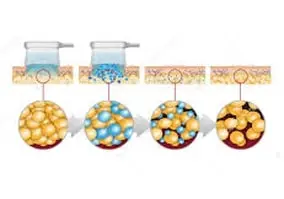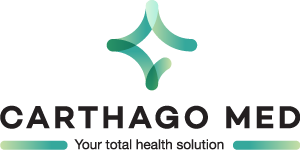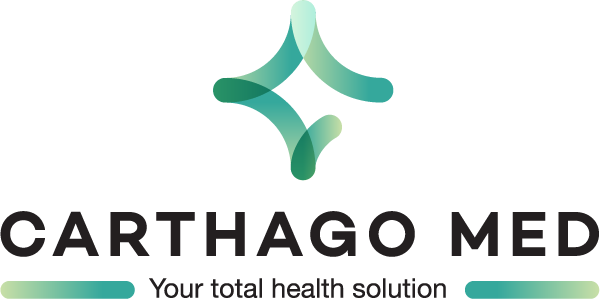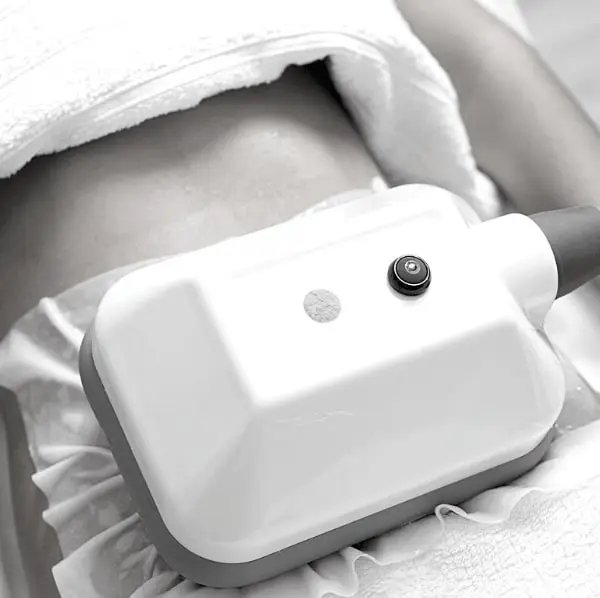Cryolipolysis : fat freezing
Destroy fat by cold
Cryolipolysis is a technique in aesthetic medicine based on the fact that fat cells are sensitive to cold. The term cryolipolysis literally means the destruction of fat by cold.
What is Cryolipolysis?
Cryolipolysis, commonly known as fat freezing or coolsculpting, is a non-invasive cosmetic procedure that targets and eliminates stubborn fat cells from specific areas of the body. This innovative treatment has gained popularity as a safe and effective alternative to traditional surgical methods such as liposuction.
Why do patients seek cryolipolysis treatment?
Cryolipolysis, also known as cryogenic lipolysis, effectively targets and freezes fat cells, causing them to crystallize and die off. Consequently, a gradual reduction in fat deposits occurs in treated areas, offering patients a more sculpted physique without the need for surgery. Unlike traditional liposuction procedures, cryolipolysis is non-invasive, eliminating the necessity for incisions, needles, or anesthesia. Consequently, patients appreciate the minimal discomfort and downtime associated with the treatment, enabling them to resume their daily activities shortly after the procedure.
Moreover, cryolipolysis offers customizable treatment areas, allowing it to target specific problem areas such as the abdomen, thighs, flanks, and double chin. This versatility makes it an attractive option for individuals seeking spot reduction in stubborn fat accumulation areas. Furthermore, the technology behind cryolipolysis is supported by scientific research and clinical studies, affirming its efficacy in reducing fat and enhancing body contouring. Patients find reassurance in this evidence-based approach, leading to predictable results.
Additionally, many patients experience significant fat reduction within a few months following their cryolipolysis session. When combined with proper diet and exercise, these results can be maintained for the long term, providing lasting satisfaction. Cryolipolysis boasts a favorable safety profile, with minimal side effects such as temporary numbness, redness, or bruising in the treated area. As a non-surgical alternative to liposuction, it eliminates the risks associated with anesthesia, infection, and scarring.
The growing popularity of cryolipolysis reflects a broader trend towards non-invasive cosmetic procedures worldwide. As more patients seek safer and more convenient solutions for body sculpting, cryolipolysis has emerged as a preferred choice due to its proven effectiveness and high patient satisfaction rates.
Who is not a candidate for cryolipolysis?
While it proves effective for many individuals, there are certain cases where it may not be the most suitable option. First and foremost, pregnant or breastfeeding women should refrain from undergoing Cryolipolysis due to the hormonal fluctuations and metabolic changes associated with these phases. Additionally, individuals with cold-related conditions, such as Raynaud's disease or cold urticaria, may find the procedure intolerable, given its reliance on freezing temperatures to eliminate fat cells. Moreover, those with pre-existing skin conditions or injuries in the treatment area, such as dermatitis or open wounds, risk exacerbating their conditions through Cryolipolysis. Furthermore, individuals with specific medical conditions like cryoglobulinemia or impaired blood circulation should exercise caution, as complications may arise from undergoing the procedure. Lastly, it's crucial for patients to maintain realistic expectations regarding Cryolipolysis. While it can yield noticeable fat reduction, it's not intended as a weight loss solution but rather as a means of targeted body contouring.
What are the prices for cryolipolysis?
The prices of cryolipolysis vary according to the number and extent of the areas to be treated. Nevertheless, performing lipolysis in Tunisia is much cheaper than in any other country in Europe. For more information on Cryolipolysis in Tunisia or to get a free personalized estimate, please click on the button below.

What is the cryolipolysis procedure?
An initial visit is important to understand if Cryolipolysis is the appropriate treatment for the patient, or if other medical and cosmetic procedures should be considered. The expert physician will assess the areas to be treated and set goals with the patient. He or she will usually weigh the patient and take photographs to visualise the before and after of the treatment. Before giving the green light to the cryolipolysis treatment, blood tests must be carried out to check that the liver is functioning properly and that it is capable of eliminating the waste products resulting from the degradation of fat cells. Before starting the Cryolipolysis treatment, the doctor applies a sheet soaked in antifreeze that adheres to the skin and allows the handpiece to have a better grip. In addition, this gel is also useful to better protect the outer layers of the skin. At this point, the machine is turned on and the handpiece placed on the area to be treated: the suction process begins by sucking up the fat cells. For a few minutes, the side plates of the machine apply cold according to the programme chosen by the expert. It is normal to feel a numbing sensation, but the treatment is not painful.
What to Expect After Cryolipolysis Treatment?
Immediately after the Cryolipolysis treatment, the treated area may be red, but only for a few hours. In the hours or days that follow, you may experience some bruising and uncomfortable numbness. In all cases, the bruising or swelling will disappear after a few weeks.The side effects of the treatment are generally minor and frequently reversible. These include bruising, oedema, induration, superficial burns, and occasionally a transient loss of sensitivity.
As this is not an invasive operation, recovery time is minimal. Daily activities can be resumed immediately, while it is advisable to wait a week before a physical activity. After the treatment, the crystallised fat cells are slowly eliminated from the body over the following weeks and months. The remaining cells are reorganised, reducing the thickness of the fat layers and considerably improving the appearance of the treated areas. During this period, it is essential to maintain a healthy lifestyle, which includes regular exercise and incorporating massages to aid in swelling reduction. Hydration is crucial, with water being the primary source, supplemented by green tea, particularly beneficial during the fat removal process. It's imperative to refrain from alcohol consumption during lymphatic drainage sessions, as alcohol can stimulate lipogenesis. Additionally, avoiding sauna, Turkish baths, or whirlpools in the week following treatment is advised to prevent exacerbating bruising and discomfort. Laser or pulsed light treatments should be avoided two weeks before and after the procedure. Sunbathing or using lamps on treated body parts is not recommended. Furthermore, areas with recent stretch marks or scars (less than one year old) should not undergo treatment.
What are the results of cryolipolysis?
Cryolipolysis is increasingly in demand, especially for areas of the body affected by localised fat, which is difficult to combat by diet and exercise alone. It is particularly indicated for eliminating abdominal fat and all the bulges located on the hips, back, arms, inner and outer thighs, knees and saddlebags. The first results are seen after 2 weeks of treatment, while after 2/3 months the final result is achieved and a reduction in fatty tissue and a natural decrease in the volume of the treated area is observed.
Contact us:
Phone: 00 216 22 960 337 - Email: contact@carthagomed.com









